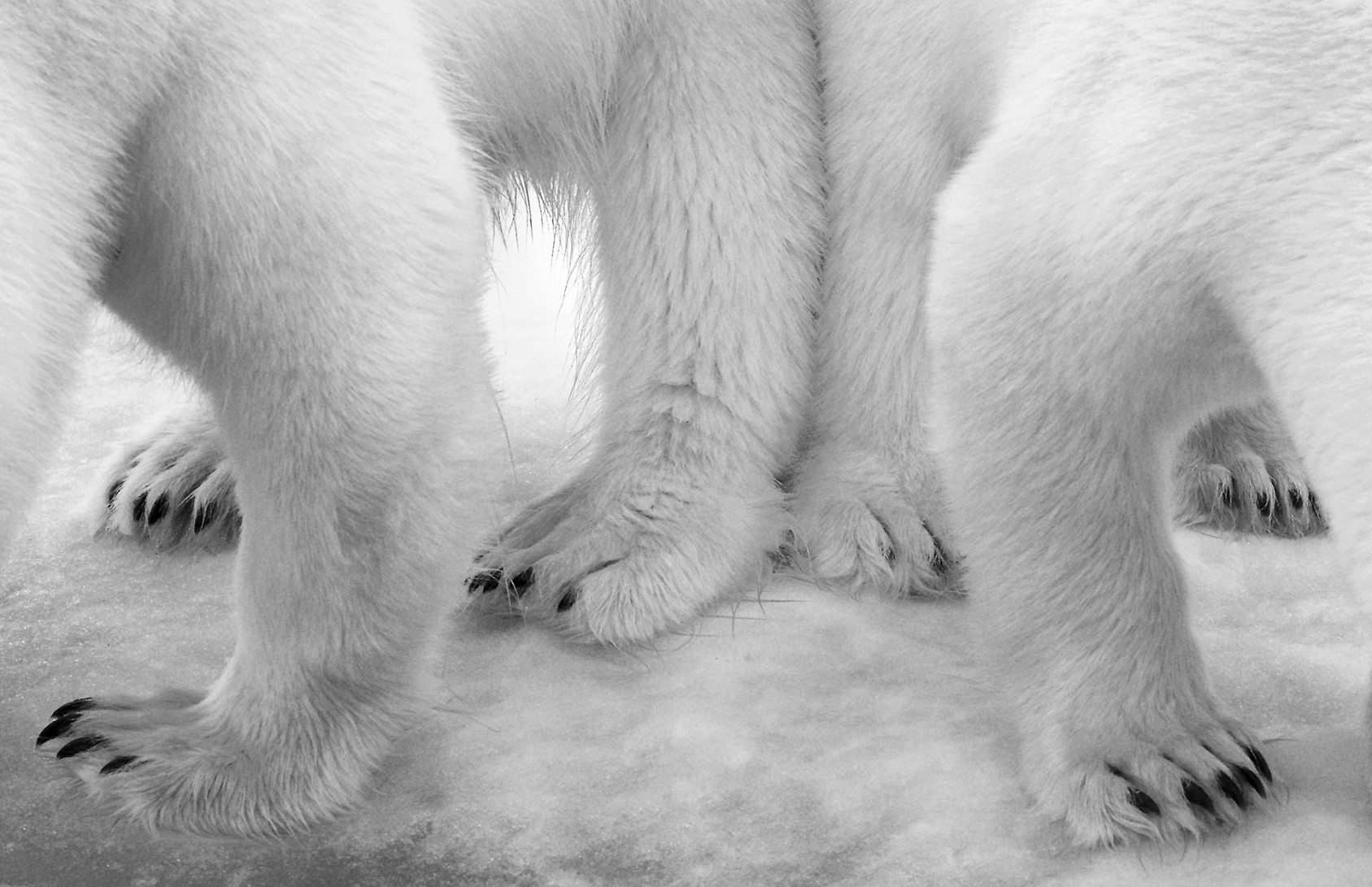
The Winners Of The NHM Wildlife Photography Awards
Polar pas de deux
Eilo Elvinger, Luxembourg
Winner 2017, Black and white
Canon EOS-1DX + 200–400mm f4 lens at 200mm; 1/640 sec at f9 (+0.7 e/v); ISO 6400.
From her ship, anchored in the icy waters off Svalbard, in Arctic Norway, Eilo spotted a polar bear and her two-year-old cub in the distance, slowly drawing closer. Polar bears are known as hunters, mainly of seals – they can smell prey from nearly a kilometre (more than half a mile) away – but they are also opportunists. Nearing the ship, they were diverted to a patch of snow soaked in leakage from the vessel’s kitchen and began to lick it. ‘I was ashamed of our contribution to the immaculate landscape’, says Eilo, ‘and of how this influenced the bears’ behaviour.’ Mirroring each other, with back legs pressed together (cub on the right), they tasted the stained snow in synchrony. Such broad paws make fine swimming paddles and help the bears to tread on thin ice, and their impressive non-retractable claws – more than 5 centimetres (2 inches) long – act like ice picks for a better grip. Mindful of the species’ shrinking habitat – climate change is reducing the Arctic sea ice on which the bears depend – Eilo framed her shot tightly, choosing black and white to ‘reflect the pollution as a shadow cast on the pristine environment’.